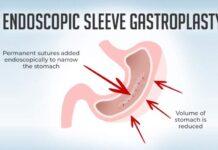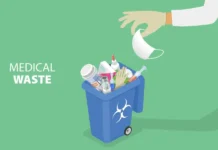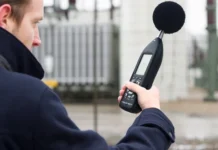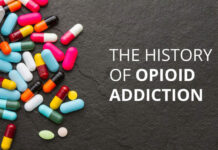Employers may do risk consulting and make use of preventative services like PPE training and risk assessments to make the workplace safer for their employees. Pre-employment drug and alcohol test is another preventative approach that has been shown to save costs.
Employers spend $740 billion annually on direct medical expenditures, lost productivity, absenteeism, higher health care costs, and more due to drug usage, therefore investing in pre-employment drug and alcohol test may help minimize costs.
In this article, we will talk about pre-employment drug and alcohol assessment.
Pre-Employment Drug Assessment
What is a pre employment assessment?
Potential employees might be screened for drug usage and prescription drug misuse via pre-employment drug testing. Pre-placement drug testing may also be utilized for workers who are returning to duty following an accident or leave.
An applicant’s ability to pass a pre-employment drug test is often made a condition of a job offer.
Forms of Samples Used in Drug Tests
Saliva, hair, blood, and urine are the most often used body fluids for detecting drug use. In controlled drug and alcohol test like those administered by the United States Department of Transportation, the most frequent and required specimen type is urine (DOT).
Nonetheless, other methods of drug testing, such as the more expensive hair drug test, have longer windows of detection than urine testing.
Drug use may be detected in hair for up to 90 days after it has stopped being actively concealed, however in urine, it can only be detected for 5-10 days.
The accuracy of blood testing is unmatched, yet it is expensive and intrusive. However, it takes much less time to detect (minutes to hours) than other methods.
Last but not least, an oral fluid test, often known as a saliva test, is less intrusive than a urine test and has a shorter detection time (7-21 hours). If an employee is unable to produce an adequate urine sample, a saliva drug test may be used as a reliable backup.
Strategies That Others Do To Avoid Drug Tests
Background checks are common practice for new hires in most industries, and drug users have figured out how to get past mandatory pre-employment testing (drugs).
Cocaine users who take the drug occasionally may pass a drug test as little as 24 hours after their last use, and even those who use it regularly can pass a test after just a few days.
Heroin and PCP addicts often consume the drugs for the same amount of time. Detoxing from marijuana, on the other hand, takes more time. These individuals often resort to creative means to overcome their addiction.
Marijuana users may try to cheat the system by submitting a fake or tampered urine sample or by introducing substance abuse evaluations like dish soap or bleach to their own sample.
Local general nutrition clinics may also provide drug users with legal drugs for this purpose. Users may sometimes go so far as to use another person’s clean pee in place of their own.
The vast majority of drug abusers figure out how to avoid detection by screens, whether by detoxing or otherwise.
In light of the proliferation of countermeasures to drug tests, it is more important than ever that special businesses exist to give comprehensive solutions to the problem of dishonest job applicants.
Reasons For Drug Tests Before Hiring
An organization that places a premium on employee safety may consider doing a pre employment functional assessment (drugs) before hiring new staff members.
Employers may reduce the number of applicants who are addicted to drugs by making it clear on applications that they may be required to take a drug test before being hired.
Pre-employment drug testing is very necessary for positions in industries where worker safety is a top priority. because it has the potential to lessen the amount of money lost to drug and alcohol-related workers’ comp claims.
In case you are wrongfully accused of being involved in drug-related crime while ongoing assessment, be sure to learn more about criminal defense lawyer and ask for assistance.
The Legal Side of Drug Testing In The Workplace
The regulations of drug testing are always changing, and their validity varies from one jurisdiction to another. If a company wants to ensure that its testing procedures follow all applicable state laws, it should speak with an attorney.
The following are some of the general best practices that have been established: the applicant must be informed that a drug test will be taken as part of the employment assessment process, all candidates for the same position must take the same test, and all tests must be conducted by a lab that has been approved by the state.
Which Drug Testing Procedures are Typically Used in the Workplace?
Testing Urine
In the United States, most prospective employers provide urine testing as a preliminary drug screening. However, their detection window is much narrower than that of other drug tests.
Drugs may be detected in the urine between 5 and 10 days after use. In most cases, a candidate’s acceptance of a conditional employment offer is tied to the outcome of a drug test.
Applicants are required to provide a urine sample for preliminary testing. If the preliminary test comes back positive for drugs, a second test will be performed before the findings are reported to the employer.
Urinalysis is the sole federally sanctioned technique for drug screening, hence it is the method of choice for both regulated and unregulated businesses.
Analyzing Hair
Drug usage may be detected in a person’s hair for up to three months before the actual testing date. Drug usage may be traced back via hair testing, while alcohol use cannot.
A lab worker takes a sample of 100 strands of hair from an employee or candidate by slicing it off close to the scalp. Positive results are expected if drug usage occurred within the detection. window.
Blood Tests
In order to detect drug or alcohol abuse in their workforce, several companies conduct blood drug testing on prospective and current workers. A blood sample is collected by a trained phlebotomist and sent off to the lab for analysis.
The amounts and kinds of drugs or alcohol present in the applicant’s or employee’s blood at the time of the sample collection will be revealed in the findings.
Most companies avoid using blood tests despite their accuracy because of the risks involved and the hefty cost. On the other hand, their detection windows are just a few hours at most.
Testing Via Saliva
Some companies utilize saliva testing because it is impossible for applicants or staff to tamper with the findings since they may be seen during the collecting procedure.
The collection of saliva may also be done on-site at the workplace, saving valuable time and money. The sample is taken from the applicant’s or employee’s oral cavity using a swab.
Employers that wish to avoid possible complications when workers cannot produce an adequate urine sample may want to consider offering a saliva test instead, which is less intrusive than the others and has a detection window spanning from 7 to 21 hours.
Conclusion
One kind of occupational health care is pre-employment assessment in drugs.
Even while most urgent care physicians are qualified to administer a pre-employment drug test, they often lack in-depth familiarity with the full range of drug tests used in the workplace.
They are also not the best people to consult with when formulating a policy for drug testing at work.
Employment assessment and drug testing are best handled in conjunction with an occupational hygiene monitoring health provider, regardless of whether your firm has a worldwide presence with more than 50,000 workers or is a small local business with fewer than 50 employees.
Interested in this? Send us a message now and let’s get started!
Read Also : How To Check Your Fitness Level And Health At Home?



































































